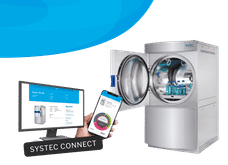New nonionic BASF surfactants offer enhanced performance
Surfactants with a highly dynamic wetting and a pronounced emulsifying action
Advertisement
BASF has launched two new ranges of readily biodegradable surfactants to the market. The Lutensol® XL and Lutensol® XP surfactants offer detergent manufacturers and formulators higher performance and value compared to conventional surfactants. Typical applications include all-purpose cleaners, degreasers, floor cleaners and hand-dishwashing detergents. These surfactants are also employed in formulations for use in the textile industry, for degreasing wool, and in industrial spray-cleaning processes.
"The degree of ethoxylation of the Lutensol® XL types ranges from 4 to 14, and the Lutensol® XP types from 3 to 14. Apart from testing the performance of our new surfactants in our laboratories, we have also investigated their impact on the environment", explained Dr. Wolfgang Spiegler, Head of Surfactants Development at BASF. "Our new surfactants are readily biodegradable".
"We received already first orders from customers who make advantage of the high performance but also wanted to replace alkylphenol-ethoxylates in a variety of consumer and industrial applications", said Wilfried Becker, Head of Surfactant Marketing of BASF in Europe. "We expect the sales of our surfactants ranges to continue to grow. Our new Lutensol® XL and Lutensol® XP product lines will be important contributors to sustaining our growth".
The Lutensol® XP surfactants are excellent replacements for C9C11 alcohol ethoxylates because of their highly dynamic action and their superior wetting power.
The Lutensol® XL surfactants also have the advantages of superior wetting but even higher emulsifying power. In particular, they are much more quick-acting than conventional surfactants on glass surfaces. Although the Lutensol® XL types are short-chain alcohol ethoxylates with a highly dynamic wetting action, their high emulsifying power is comparable to that of surfactants based on longer-chain alcohols. These new BASF surfactants have a very low odor, and their low residual alcohol content makes them a good alternative to replace for C9C11 alcohol ethoxylates and alkylphenolethoxylates.
Chemically, the new surfactants are products of ethylene oxide, propylene oxide and a new BASF hydrophobe manufactured from C4 feedstocks. BASF is a vertically integrated chemicals manufacturer: the feedstocks are produced in the company's integrated petrochemical facilities, and the surfactants are manufactured in world-scale plants.
Topics
Organizations
Other news from the department research and development
These products might interest you

Systec H-Series by Systec
Safe, reproducible and validatable sterilization of liquids, solids and waste
Autoclaves with 65-1580 liters usable space, flexibly expandable for various applications

Whatman™ folded filter papers by Cytiva
Whatman folded filter papers
Convenient folded formats speed up your sample preparation

Get the chemical industry in your inbox
By submitting this form you agree that LUMITOS AG will send you the newsletter(s) selected above by email. Your data will not be passed on to third parties. Your data will be stored and processed in accordance with our data protection regulations. LUMITOS may contact you by email for the purpose of advertising or market and opinion surveys. You can revoke your consent at any time without giving reasons to LUMITOS AG, Ernst-Augustin-Str. 2, 12489 Berlin, Germany or by e-mail at revoke@lumitos.com with effect for the future. In addition, each email contains a link to unsubscribe from the corresponding newsletter.



























































